
Senegal chapter two
Dakar, the “Pink” Lake Retba, and the Senegalese coast.
I’m the first one in the lobby. The attendant asks me to pay the bill. I tell him my guide will when he arrives. He nods and I sit and wait.
Amadou arrives just as the Italian family appears. He pays the bill and helps us load our luggage into the van. He tells us we’ll breakfast first near the African Renaissance Monument before visiting it. He hopes we’re ready to climb some stairs.
We drive along the coast, and I’m happy to see more of the city. When I was planning my trip I had debated neighborhoods to live in; the more I see of the city the happier I am with where I am.
There seem to be a lot of new construction projects in various states of commencement, including a new memorial that echoes the one on Gorée Island. It looks beautiful from the visualizations on their website. Other high rises and parks appear to be under construction, and I am curious to see how this drive transforms in another five to ten years.

We spot the African Renaissance Monument in the distance as we drive up the coast. After breakfast and a short drive, we are dropped off at the foot of the steps leading up to the base of the monument itself. A group of tourists are on their way down and Amadou stops to ask them where they’re from. They’re on a cruise, here for the day. They’re moving on before the monument itself has opened.
We climb the 208 steps to the base. We take our time circumambulating the monument and admire the views of it and the surrounding city. A strong breeze blows from the ocean and I tell Amadou it was smart to do this in the morning. Climbing the steps in the afternoon sun would have been a lot less enjoyable. He smiles and points to a small lighthouse in the distance. That’s the western-most point in Africa, he tells me. I ask if it’s possible to take a boat out there. The answer is unclear.

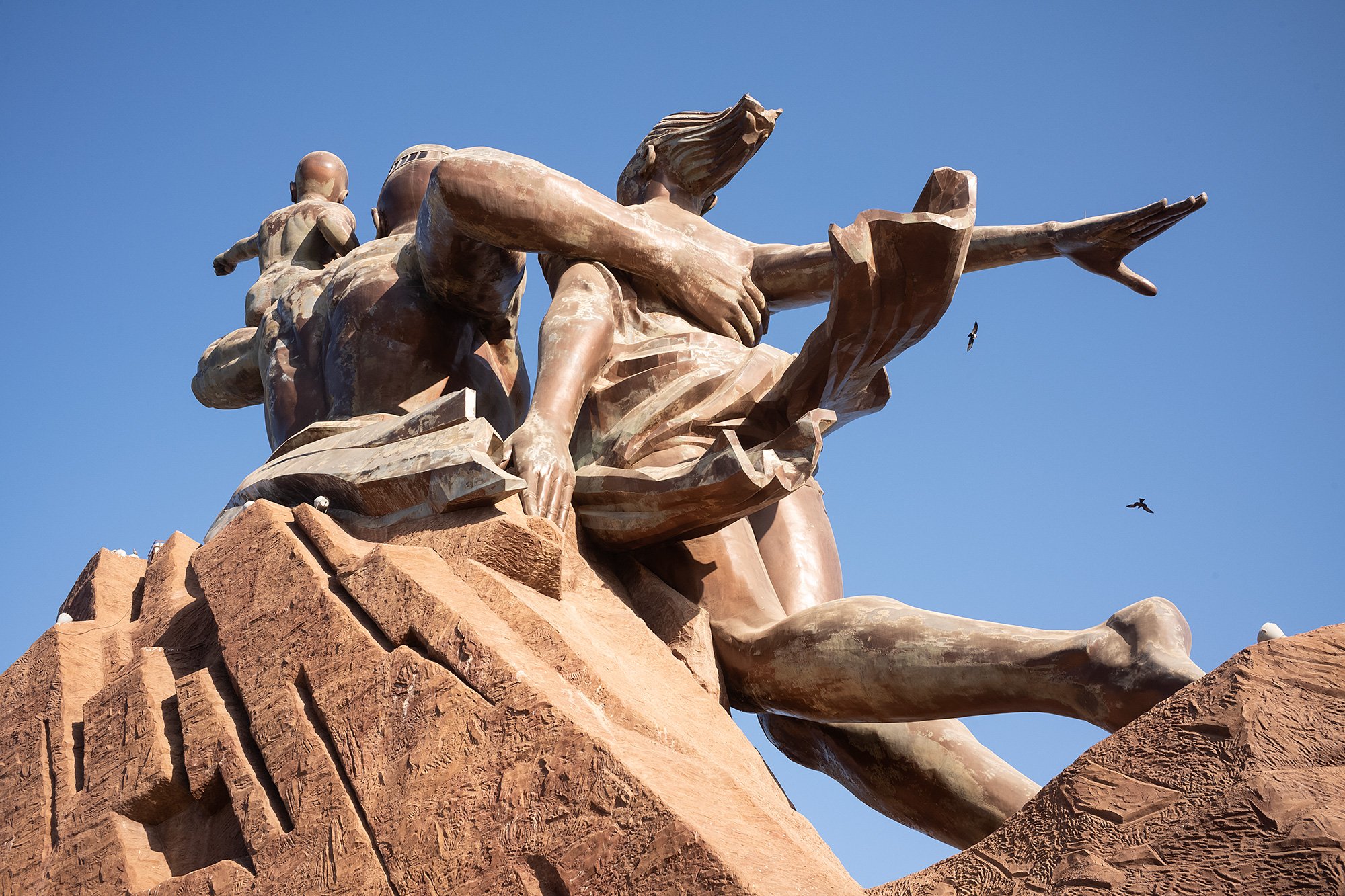



Opened in April 2010 to commemorate Senegal's 50 years of independence from France, the 52m-tall bronze monument sits on top of one of the twin hills known as the Collines des Mamelles. It is the tallest statue in Africa. The Mamelles Lighthouse sits atop the other.
Designed by the Senegalese architect Pierre Goudiaby, the monument embodies “an Africa emerging from the bowels of the earth, leaving obscurantism to go towards the light.” A man holds a baby aloft, a woman by the waist. The child points west, to the Statue of Liberty; the woman’s hand reaches out behind her, a reminder not to forget the past.
When it opens we are led inside. Displays on the ground floor celebrate great African leaders and other influential figures of African origin as well as the construction of the monument. A guide leads us upstairs to an exhibition by a local artist and explicates the various figures posed around the room. On the third floor we are shown the Presidential Meeting Room. The walls are lined with art gifted by various West African countries.
Just outside I am struck by a triptych which shows Martin Luther King, Jr. and Barack Obama flanking a canvas that depicts the Door of No Return. A dove flies over the door carrying the words “I have a dream” and “Yes we can” on its wings. I reflect on the messages: how far we have come; how far we yet have to go.

Back on the ground floor the guide has us pile into a small elevator to head to the top of the monument. There’s only room enough for five. Between the Italians, the guide, a guard, and myself, it’s a perfect fit.
From the top there’s sweeping views of the city out into the ocean. The guide points out an open window through which we can see the face of the woman. From aother we can see the back of the child and a few of the large fingers of the man supporting them.

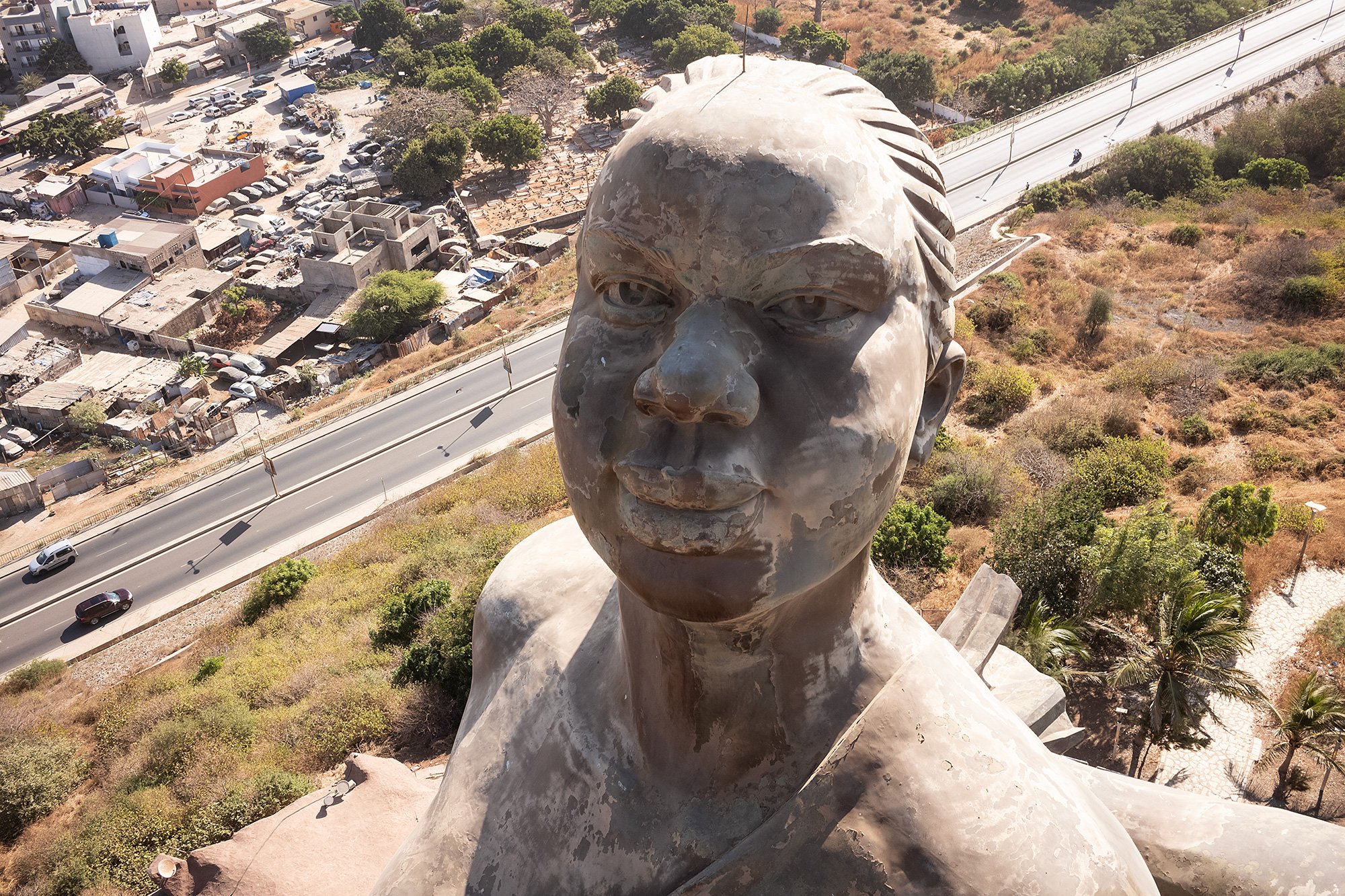


The van pulls up just as we reach the base of the stairs. I’m impressed by the choreography. We drive north and west to the Les Almadies neighborhood in the far corner of the city to get a closer look at the western-most lighthouse, passing the US embassy.
We alight and Amadou leads us past a number of restaurants to a large terrace covered in seashells. I ask if the restaurant is La Maree. It is. I tell Amadou it was recommended to me by my host.
At the edge of the terrace he points out the lighthouse again. We take photos and then climb back into the van for the drive to Lake Retba, the “pink” lake.
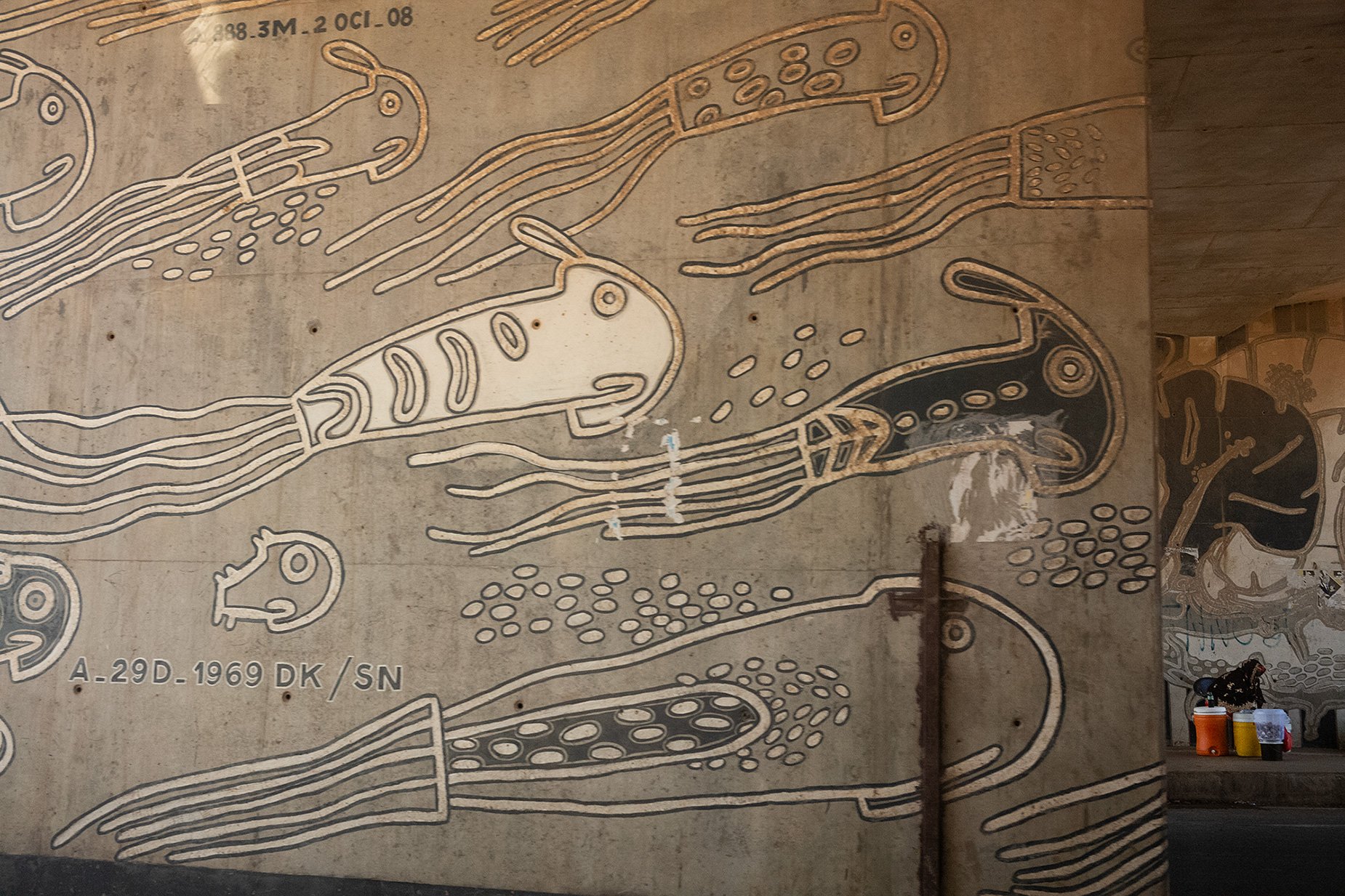


Reaching the lake we turn into a lodge. Amadou tells us that our next activity is a quad ride through the desert and along the ocean, after which we’ll visit the lake. I ask him if it’s possible to swim in the lake. He looks at me for a second and says yes, it’s possible.
He leads us to where the quad bikes are and our guide shows us how to use them. There’s hand brakes and a button for the gas. It’s my first time driving one and I squeeze ever so gently on the gas, afraid of jumping the machine into the guide in front of me. After a moment, I get the hang of it and we are speeding towards the dunes.
We end up on a slight rise in the desert. A truck behind us is stuck in the sand and Amadou and our guide speed back down to help them out. The truck backs out and then drives forward until it’s once again stuck. They push the truck out and it lumbers up the hill until it’s once again stuck. I take photos of the buildings in the distance just below our vantage point.

Amadou and the guide return to where we are and he tells us that the next part will be a little more challenging. We’re to drive through the forest on a winding path. He asks Roberta if she’d rather drive than her son. They confer.
Driving through the forest is a little like skiing the tree trails. The path winds back and forth, the turns fortified with sandy embankments. We have to dodge branches here and there, but it’s a lot of fun and I’m a little sad when we reach the other side.
The path lets us out on the beach and we pause to take photos. A few villagers have shown up and array knick knacks on the sand, hoping to sell something to the tourists who make their way here. At their bidding, I take a look, though with no intention to buy.


We ride back towards the town and the lake, stopping to see piles of salt drying by the shore. In the distance we can see salt farmers scooping the salt from the lake floor into wooden boats. I take a large crystal in my hand and put it in my mouth. It dissolves slowly on my tongue.
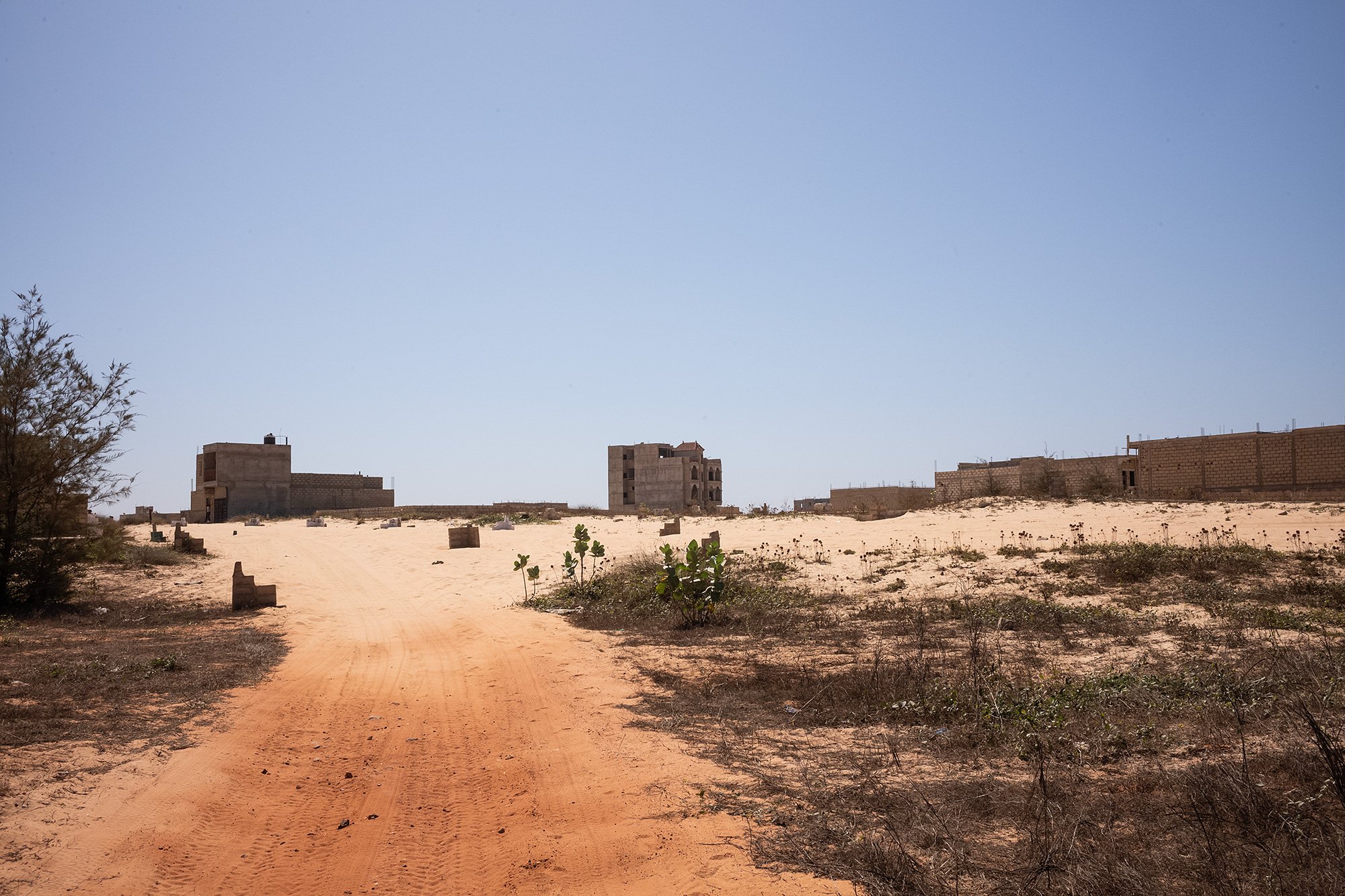



We leave the quad bikes at the hotel and Amadou tells us we’re going boating on the lake. I change into my swim trunks and follow.
Lake Retba, the so-called “Pink lake” gets its color from the micro-algae concentrations in the water. Unfortunately, due to flood waters being redirected into the lake in recent years, the concentrations have been so diluted that the lake no longer exhibits that hue. Amadou tells us that he hopes in a few years the concentration will be high enough to once again see the pink effect. It’s also known for its high salt content, due to the influx of seawater and its subsequent evaporation. Like the Dead Sea, the bouyancy of the lake makes floating extremely easy.
Amadou leads us to the shore where we board a pink boat. If we can’t see the effect on the lake at least we can see it echoed in the paint job. We row out towards the middle of the lake. Amadou once again points out the collectors in the distance. He tells us that usually he takes guests to watch them collect the salt, but today they are too far to be reached.
He tells me that now is the time to swim. He tells me not to jump in and to be careful for my eyes. He leads me to the edge of the boat and tells me to ease myself in.
The water is cold and refreshing after a day in the sun. I find myself surprisingly bouyant. Amadou tells me to raise my hands up and it’s surprisingly easy to do so without sinking. Amadou takes photos and videos. I float for a bit in the cool water and then swim back to the boat, not wanting to delay our trip for too long. We still have lunch ahead of us and an almost five hour drive to Saint Louis.

After lunch, we climb back into the van for the long trip to Saint Louis. We pass small towns and villages, public squares, shops that line the road. Frequent piles of watermelons. Mosques appear and disappear, sometimes set right alongside our path, sometimes in the distance, almost hidden by other buildings and trees.
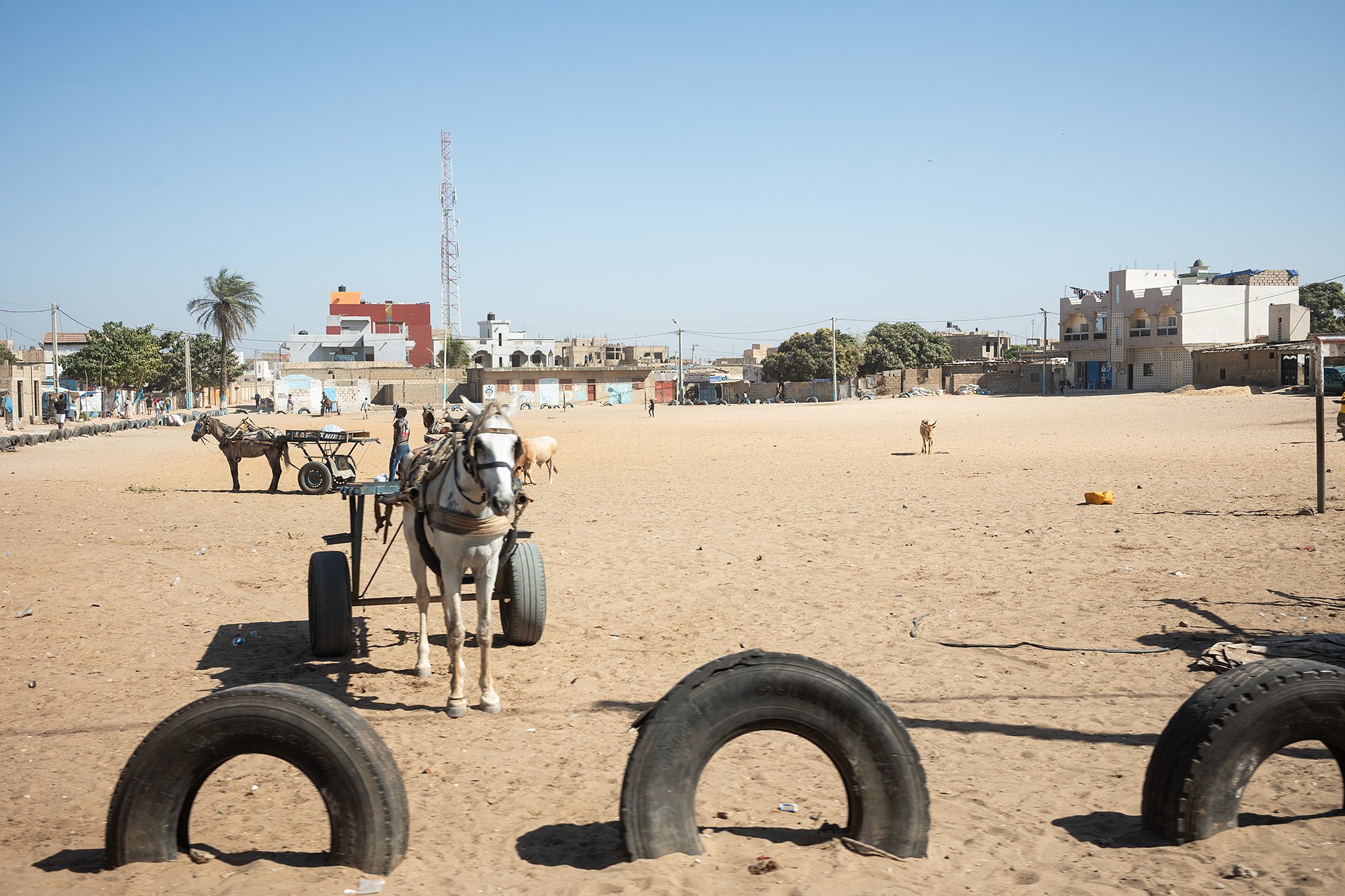






It’s dark by the time we make it to Saint Louis. We drive through the modern parts of the sprawling city until we reach the bridge that connects the mainland to the historic island. The driver takes a left and soon we are across. Our hotel sits just on the other side and soon we are once again gathering our bags and checking into a new hotel, the Hotel de la Poste.
Amadou warns us that it’ll be an early morning tomorrow. Breakfast starts at 0600 and we’ll be leaving the hotel at 0700 to drive to the Djoudj National Bird Sanctuary. He suggests the hotel restaurant for dinner, but we’re on our own. My room is decorated with pictures from Le Petit Prince, and the window opens onto a low roof with views of the bridge. It’s not quite a terrace, but I grab my camera and climb out onto it anyway to take a photo.
On Google Maps I find a highly-rated restaurant nearby and set out to see a bit of the city before going to bed. Along the way I step towards the water to take a photo and a solider kindly blocks my way. He explains that he’s guarding a military vessel moored to the dock and that I’m not allowed to approach. I thank him and move on to the next one to take a photo of the Pont Faidherbe, the bridge connecting the island to the mainland.
The restaurant is small, a few tables in a spare room with the kitchen off to the side. One woman cooks while another one assists, takes orders, and serves. I decide to sit outside at one of the two tables on the street. The sign advertises the name “Chez Dasso Slow Food.”
I ask the waitress for a recommenation and she suggests the Riz Dasso. I place my order and take out a book to read.
The name of the restaurant is not a misnomer. The food comes slowly. The woman apologizes for the wait, there’s a large party who arrived before I did taking up most of the restaurant and the cook’s time. I tell her I’m in no rush. And I’m not. I had thought about trying to get to bed early, but in truth I wouldn’t be able to sleep. Instead, I savor the food. It’s delicious and I’d come back the following night if only I had the time.
27 December 2023
🇸🇳













